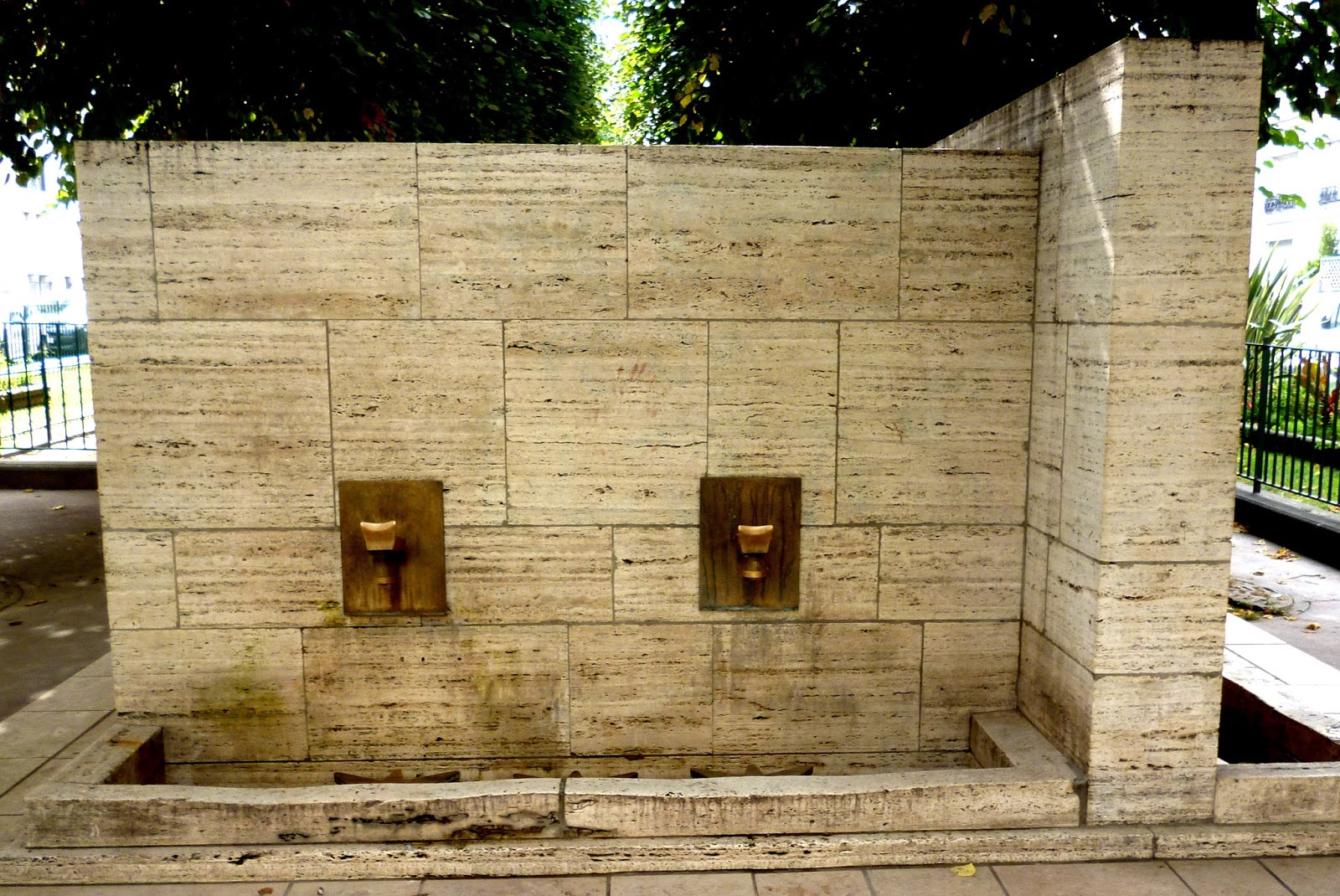The notes in French below are taken from a paragraph at the entrance to the square, and the English is my translation of them.
'Square Lamartine
1862
En 1860, le poète Alphonse de Lamartine (1790–1869), ruiné par sa trop grande prodigalité, accepta, à contre-cœur, d'habiter un chalet de l'avenue Henri-Martin, cadeau de la Ville de Paris. Une statue (1951), œuvre de Paul François Niclausse (1879–1958), le représente.'
'In 1860 the poet Alphonse de Lamartine (1790–1869), ruined by his huge extravagance, reluctantly accepted to live in a chalet on avenue Henri-Martin, a gift from the town of Paris. A statue (1951), the work of Paul François Niclausse (1879–1958), represents him.'
'Un monument (1904) de Jean-Baptiste Champeil est dédie au compositeur français Benjamin Godard.'
'A monument (1904) by Jean-Baptiste Champeil is dedicated to the French composer Benjamin Godard.' (Unfortunately with pigeons here.)
'La fontaine, située devant le square, alimenté par un puits artésien creusé en 1861, servait, à l'origine, à alimenté les riviéres et les lacs du bois de Boulogne. Son eau, provenant de la nappe phréatique albienne, aurait des vertus thératpeutiques.'
'The fountain in front of the square, fed by an artesian well dug out in 1861, originally served to feed the rivers and lakes of the Bois de Boulogne. Its water, coming from an Albian water table, had therapeutic qualities.'
'PUITS
ARTÉSIEN
DE
PASSY
FORÉ EN 1855'
Yes, work began on the well in 1855, but it wasn't actually completed until 1861.




















































